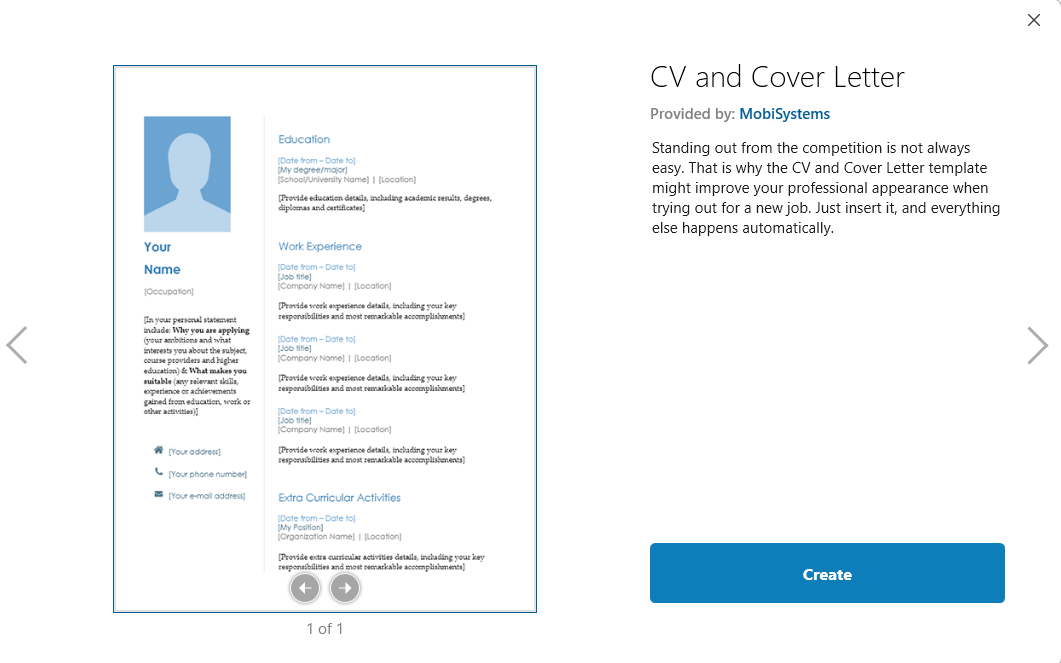Ah, the CV – both a blessing and a curse. On one hand, it lets you show your professional experience in just a few glances, but on the other, if not done right, might be the blocker to an interview. A great CV can help you stand out from the crowd and land the job you want, but how can you make sure it’s as good as it can be?
Of course, the job you’re applying for will affect the content and format of your document, but there are some universal tips on how to write a CV. Here we go:
1. Personal details
The first step is to include your name and contact information at the top of your resume. This is the first thing that employers will see, so make sure it’s clear and easy to read. Include your name, phone number, address, LinkedIn and website / portfolio (if you have one).
Your name should be the largest and most prominent element on your resume, with contact information being be smaller and simpler. You don’t need to include your full address on your resume – Just your city and country should be enough.
Add a link to your (updated) online portfolio or LinkedIn profile if you have one, which will add further proof to your experience with concrete examples.
2. Personal statement
Next up, write a short summary that highlights your key skills key skills, achievements, and qualifications. Keep this as succinct as possible, and imagine it as your ‘elevator pitch’ if you had to verbally summarize yourself in 30 seconds. It’s also a good idea to express your career goals at this point. Here are some things to keep in mind:
Use active and confident language
Tailor it to the specific job and employer
Include keywords from the job description
Quantify your results whenever possible
Avoid generic or vague statements
3.Work experience and achievements
Here’s what will take up the bulk of your CV, where you’ll need list your previous jobs and describe your responsibilities and accomplishments. This is the most important and detailed part of your CV, as it shows employers what you have done, and what you can do for them.
Start with your current or most recent job and go backwards in reverse chronological order
Include the name and location of the company, your job title, and the dates of employment
Use bullet points to describe your duties and achievements for each job
Use action verbs and specific examples to demonstrate your impact and value
Quantify your results with numbers, percentages, or metrics whenever possible
Include keywords from the job description that match your skills and experience
Highlight any awards, recognitions, or promotions you received
All of the above will cover a lot of ground – so the key here is to keep things succinct, otherwise your CV will go on for pages. A general rule of thumb is to have no more than 100 words per position, but this will depend on how many jobs you want to list in the first place.
4. Showcase your skills
Here’s your chance to highlight or mention skills that may not have fit in the Work Experience section. These can include both hard skills (technical or job specific skills) and soft skills (interpersonal or transferable skills). Here’s how to handle this section:
Use bullet points
Group your skills into categories for better readability
Include keywords from the job description that match your skills
Provide examples of how you used your skills in your work experience or education sections
Mention any certifications or licenses you have that prove your skills
Don’t forget the soft skills! According to a skills survey by Resume Genius, a mix of technical and soft skills is preferred by 48% of hiring managers, which shows the increasing importance of having a diverse skill set.
5. Education
This is typically one of the shorter sections in your CV, but is still important. Include your degree, major, school name, location, and graduation date, as well as any honors, awards, scholarships, or extracurricular activities that are relevant. This is also where you can list your qualifications.
6. Extra info
If you have space left, it’s always a nice touch to have a section that lets the recruiter learn a little more about you as a person. Although a CV is a place for your professional life, it always helps to humanise yourself a little, plus it gives you more to talk about for when it comes to your interview.
Languages: List any languages that you speak fluently or proficiently, with an indication of your level
Volunteer work: List any volunteer work that you have done that demonstrates your skills, values, or passions
Hobbies: List any hobbies or interests that are relevant to the job or employer, or that show a positive aspect of your personality
7. Consider who you’re writing it for
Creative Fields (Marketing, Design, Copywriting.): Showcase your creative chops and lead with a strong portfolio link at the top of your CV. Within your work experience section, highlight specific creative projects you spearheaded, using action verbs like “conceptualized,” “developed,” and “executed” to describe your process. Focus on visual elements; if applicable, and outline any special software that you’re proficient in.
Technical Fields (Engineering, IT, Sciences.): List your relevant programming languages, certifications, and software proficiency prominently. Quantify accomplishments using technical metrics; for example, if you optimized a program, mention the percentage improvement in efficiency.
Business Fields (Finance, Management, Consulting.): Highlight your leadership potential and results-oriented approach. Prove your problem-solving skills by describing situations you tackled and the solutions you implemented or showcase your financial acumen by quantifying your contributions to revenue growth, cost reduction, or process improvements.
Academic Fields (Research, Education, Academia.): Let your research shine and list your publications in peer-reviewed journals, presentations at conferences, and any grants you’ve secured. Tailor your CV to the specific academic position, highlighting relevant research areas and expertise. Mention any teaching experience, emphasizing your ability to effectively communicate complex topics.
8. Templates
When in doubt, templates are a great way to go for putting together a good CV. They will have been created with the spaces already created for you, saving you time and letting you focus on your text. Read more about the power of productivity templates.

8. Visual tips
Of course, the text is one side of the coin for when it comes to your CV – the way it looks is just as important. But, that’s a whole other topic, so stay tuned for our sister article that goes into design tips for your CV.
9. And finally…
The main thing to remember, is to tailor your CV for the employer and don’t just send out the same one to everything you apply for. Keep things as succinct as possible, and never go on more than three pages. To start building your CV, why not give MobiDocs a download and give your job application the edge it needs to succeed in today’s competitive working world. You can either use MobiDocs as a free word processor, or upgrade to Premium for even more features to make your CV shine.
10. CV FAQ
What is the difference between a CV and a resume?
A CV is usually longer and more detailed than a resume, which is a brief summary of your skills and experience. A CV is typically used for academic or research positions, while a resume is more common for jobs in the private sector. However, this could be geographical as well, for example in the UK, the term ‘CV’ can be applied for any application, whereas ‘resume’ is more commonly used in the USA.
How do I write a CV?
Every CV needs to be tailored for the job, but the above tips will most certainly help you to have the edge. Remember to include personal information, work experience, and other important details, while making sure that the fonts and formatting are clear and legible.
How long should a CV be?
The length of a CV depends on your level of experience and the type of position you are applying for. But, as a general rule of thumb, try to keep your CV within two or three pages – unless the job is highly scientific or academic, which will require more detail. Remember to keep things lean, so avoid including unnecessary or irrelevant information. A hiring simulation study by ResumeGo revealed that a two-page resume gives an applicant a 70% higher chance of being preferred by recruiters than a one-page resume from a comparable candidate.
How do I format a CV?
The format of a CV can vary depending on your personal preference and the conventions of your field. But, as mentioned in the article above, use a simple font, consistent spacing, bullet points and tables if necessary. The main thing is to keep the document as clutter-free as possible while still keeping all the important details.
When should I update my CV?
Most people tend to update their CV when they are ready to apply for a new job or position. At this point, you’ll want to update it to reflect your current skills, achievements, and goals. Also, you may need to remove some older or irrelevant content to make sure you have the space for new details. This is also a good time to check it again for ways to optimize your writing, and to iron out any typos or grammatical errors.
How should I send my CV?
This would depend on how the hiring body prefers to receive the CV. Some common ways are to attach it to an email together with a cover letter or intro, or by submitting it through a contact form on a job website, or directly on the employer website.
Should I convert my CV to PDF?
Yes – it’s generally best practice to convert your document into PDF format. This is so that it cannot be edited, but more importantly, it will preserve the formatting and other aspects as you intend – as the recipient may have different office software that may not have full compatibility with your file.
What are some common CV mistakes to avoid?
Some of the most common pitfalls of submitting a CV include lying or exaggerating, using outdated information, having spelling errors, using an unprofessional tone, or having too many pages. It’s always a good idea to run your most updated CV past a friend so that they can give their outside perspective.
How do I make my CV stand out?
Employers get a lot of applicants, so go ahead and use clear and catchy headlines, keywords and phrases that match their expectations, visual elements, results-oriented language, and an attractive-modern design.
And there you have it. With all the above tips and answers, your CV will stand a much better chance of making the cut and getting you that all-important interview. Good luck!




